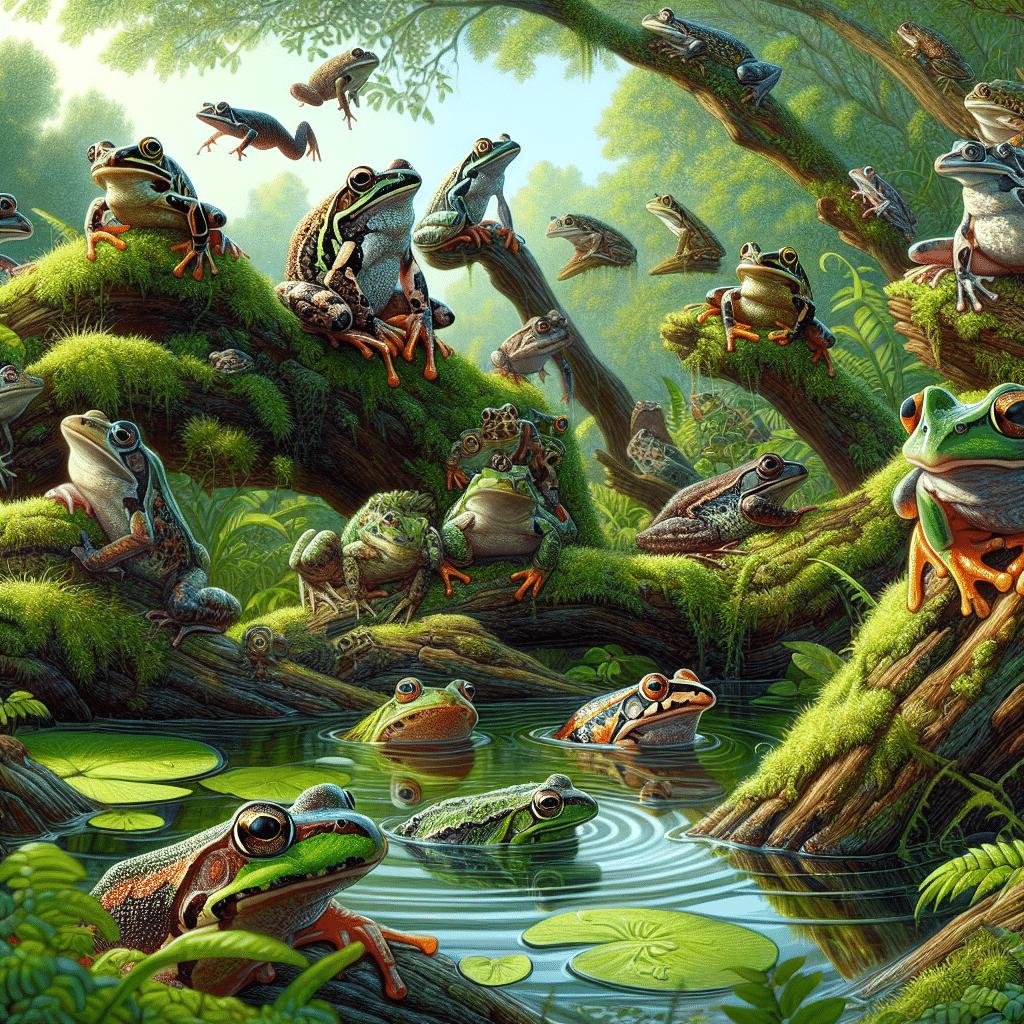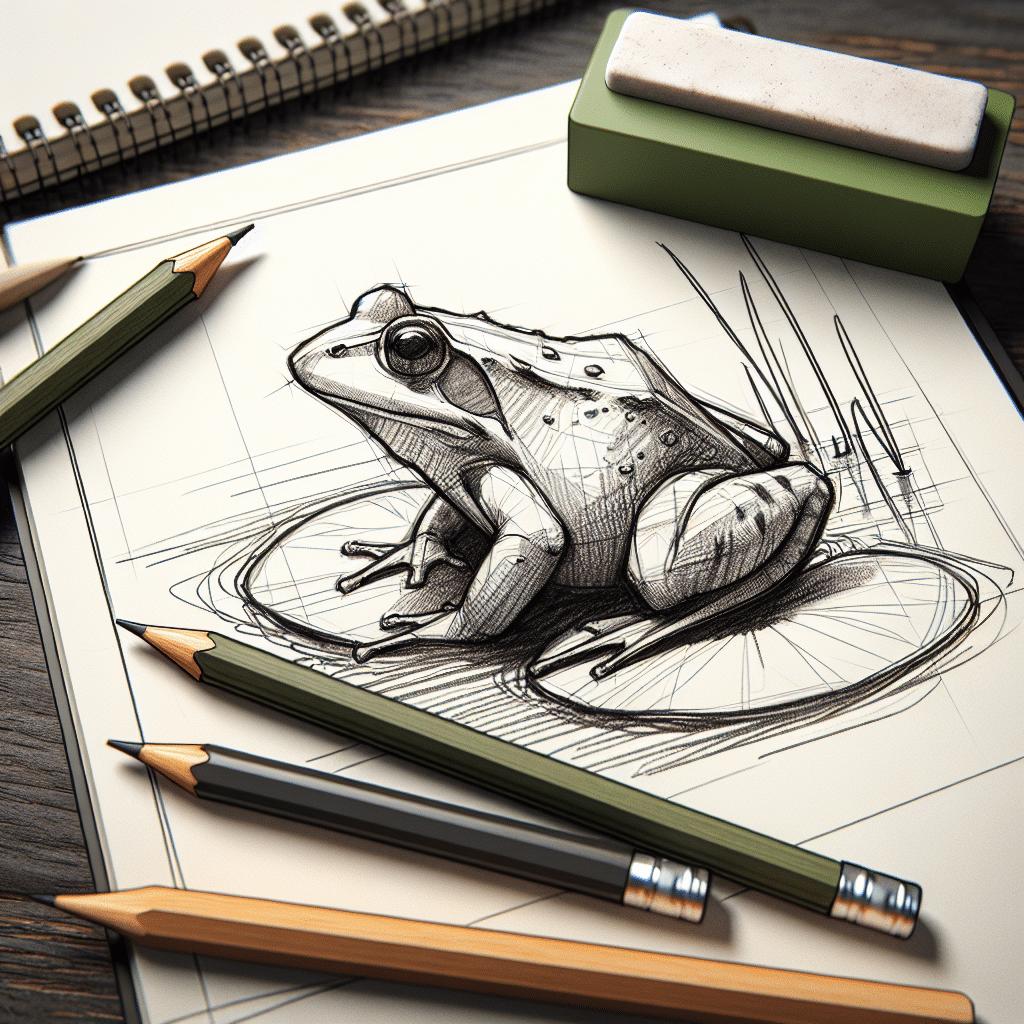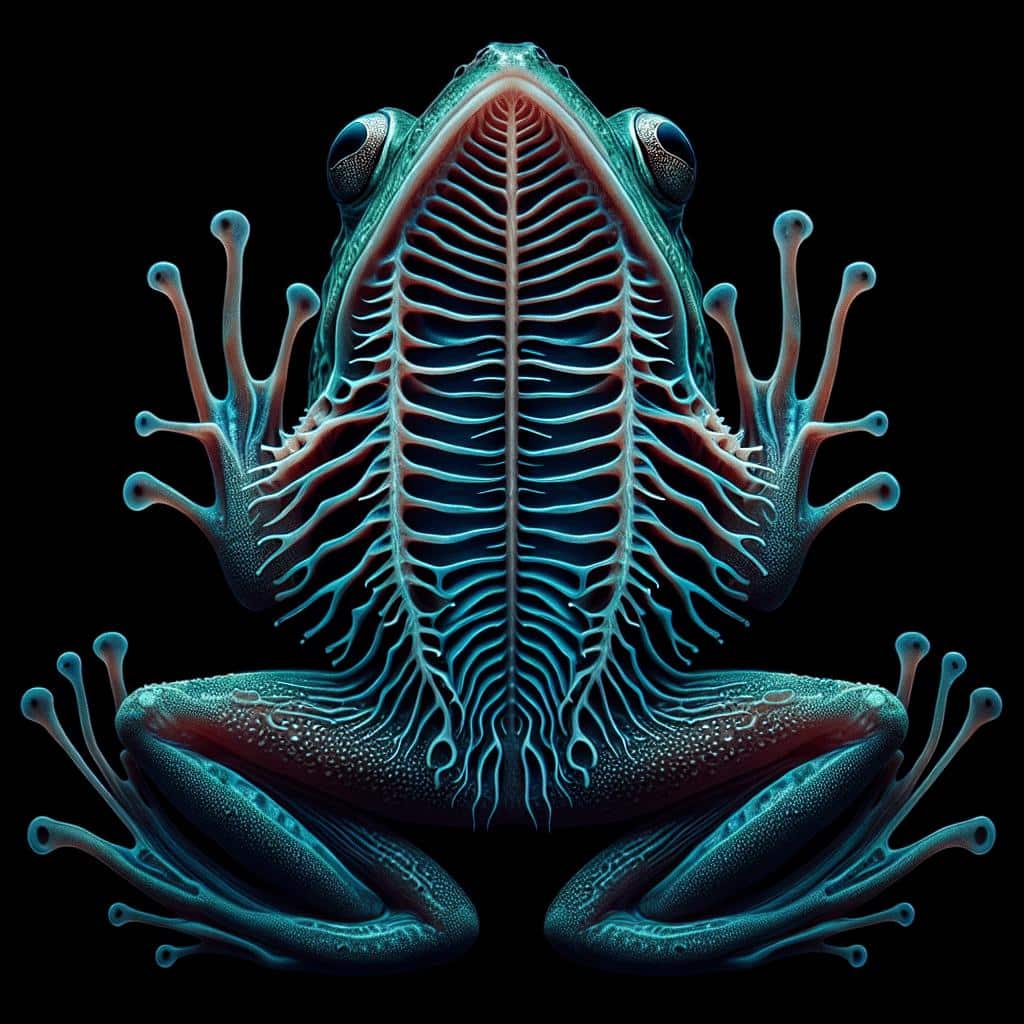Get ready to dive into the amazing world of frogs! In this comprehensive guide, you will discover the fascinating ecosystem that frogs call home. From their incredible life cycle to the many different habitats they live in, get ready to explore the incredible world of these unique amphibians. So grab your magnifying glass and get ready to meet some awesome frogs!

Understanding Frogs and Their Habitats
Frogs are amazing creatures that belong to the amphibian class. Amphibians are a special group of animals that can live both on land and in water. They have unique adaptations that allow them to thrive in different environments. Frogs are known for their ability to jump and their slimy skin. They have long hind legs and webbed feet, which help them swim and leap from one place to another.
Frogs have a diverse array of species that can be found all around the world. There are more than 6,000 species of frogs, each with its own unique characteristics and behaviors. Some frogs are small and colorful, while others are big and camouflaged to blend in with their surroundings. Frogs come in all shapes and sizes, from the tiny Brazilian golden frog to the giant Goliath frog.
Frogs can be found in a wide range of habitats. Some prefer to live in forests, while others make their homes near bodies of water like ponds, lakes, or rivers. Frogs need water because their skin needs to be moist in order for them to breathe. They have special glands that produce a slimy substance, which helps keep their skin moist. Some frogs even live in deserts, surviving in places where water is scarce. Frogs are truly adaptable creatures!
Delving Into Frog Life Cycles
Frogs undergo a fascinating transformation during their life cycle. They start as tiny eggs laid in water. These eggs hatch into tadpoles, which have gills and live exclusively in water. Tadpoles feed on algae and other plants found in the water, and they gradually develop legs and lungs. As they grow, their tails shrink and they become more like adult frogs.
During their life cycle, frogs go through many physical changes. Their bodies change from having gills to lungs, allowing them to breathe air instead of water. They also develop legs and lose their tails. It is truly a remarkable transformation!
The average lifespan of a frog varies depending on the species, but most frogs live for several years. Some can live for up to 10 years or even longer. However, many frogs do not make it to adulthood due to predation, habitat loss, or other factors. It is important to protect frog populations and their habitats to ensure their survival.

Excavating Frog Diets and Predators
Frogs are carnivores, which means they eat meat. They have a varied diet and consume a wide range of prey. Some frogs eat insects like flies, mosquitoes, and beetles. Others feed on spiders, worms, small fish, or even other frogs. Frogs have a special adaptation called a sticky tongue that helps them catch their prey. They use their long tongues to quickly snatch insects or other small animals and swallow them whole.
Just like any other animal, frogs have predators. They are targeted by birds, snakes, turtles, fish, and even other frogs. Frogs have developed different defense mechanisms to protect themselves from predators. Some frogs have bright and colorful patterns on their skin, which serve as a warning to potential predators that they are toxic or taste bad. Other frogs can camouflage themselves to blend in with their surroundings and avoid detection.
The diet plays a crucial role in frog health and lifespan. A healthy and balanced diet ensures that frogs get all the nutrients they need to thrive. Inadequate nutrition can weaken frogs and make them vulnerable to diseases or predation. It is important to maintain the balance of prey and predators in ecosystems to ensure the health of frog populations.
Examining Frog Reproduction
Frog mating is a unique and interesting process. It usually begins with the male frog making a loud call to attract a female. Each species of frog has its own distinct call, and it can be quite loud and distinctive. The male’s call is like a love song that signals his readiness to mate.
Once the male has attracted a female, they engage in a special dance known as amplexus. This is when the male grasps the female from behind and fertilizes her eggs as she lays them. The fertilized eggs are usually laid in water, where they are safe from predators and have access to the necessary resources for development.
The eggs hatch into tadpoles, which are the larval stage of frogs. Tadpoles live in water and eat plants and algae. They undergo a process called metamorphosis, during which they develop legs and lungs to transition into adult frogs. The length of time it takes for tadpoles to transform into adult frogs varies depending on the species and environmental conditions.
Tadpoles have their own unique survival strategies. Some tadpoles hide among plants or in shallow water to avoid predators. Others have toxic or unpleasant-tasting skin, which protects them from being eaten. Tadpoles are vulnerable to predation and face many challenges, but they are equipped with adaptations to help them survive until they can become adult frogs.

Observing Frog Behaviors
Frogs have a variety of behaviors that help them survive in their habitats. They are most active during the night and spend their days hiding and resting. Common frog activities include foraging for food, finding shelter, and interacting with other frogs. Frogs are excellent jumpers and swimmers, which allows them to navigate their environments with ease.
Some frogs also have the ability to migrate. Migration is when frogs travel long distances to find suitable breeding sites or better habitats. This is most commonly observed in aquatic frogs that need to find suitable freshwater bodies for reproduction. Frogs use their strong legs to hop or crawl to their desired destinations, sometimes traveling hundreds of miles.
Frogs have unique behaviors and calls that help them communicate with other frogs. Different species of frogs have distinctive calls that they use to attract mates or defend their territories. These calls can vary in volume, pitch, and rhythm. Some frogs even create choruses where multiple individuals call together, creating a symphony of sounds.
Frog Adaptations and Survival Mechanisms
Frogs have many physical adaptations that help them survive in their environments. They have long, powerful hind legs that allow them to jump long distances and escape from predators. Their webbed feet enable them to swim efficiently and navigate through bodies of water. Frogs also have a slimy skin that helps keep them moist and protects them from infections.
In addition to physical adaptations, frogs have developed defense mechanisms to protect themselves from predators. Some frogs have bright and vibrant colors that warn predators of their toxicity or bad taste. Others can change their skin color to blend in with their surroundings, making them difficult to spot. Some frogs even have camouflage patterns that resemble leaves or tree bark.
The habitat plays a crucial role in frog behavior and adaptations. Different frog species have specific requirements for their habitats, such as the presence of water, suitable vegetation, or specific temperature ranges. Changes in their habitats, such as pollution or destruction of their natural environments, can have a significant impact on frog populations and their ability to survive.
Appreciating Frog Roles in Ecosystems
Frogs play important roles in ecosystems and are considered bioindicators. Bioindicators are species that can indicate the overall health of an ecosystem. Frogs are highly sensitive to changes in their environments, so their presence or absence can provide valuable information about the condition of an ecosystem. By monitoring frog populations, scientists can assess the health of ecosystems and identify potential issues.
Frogs also play a key role in food webs. They help control populations of insects and other small animals, acting as natural pest controllers. Frogs are important predators of mosquitoes, which are known to carry diseases like malaria or Zika virus. Without frogs, populations of insects could become unbalanced, leading to negative effects on ecosystems and human health.
Furthermore, frogs are considered charismatic and fascinating creatures that capture people’s interest and curiosity. They inspire scientists, conservationists, and nature enthusiasts to study and protect them. By appreciating frogs and their vital roles in ecosystems, we can work towards their conservation and ensure their continued existence.
Deciphering Threats to Frog Populations
Frog populations worldwide are facing numerous threats that put their survival at risk. Climate change is a significant threat to frogs, as it can alter their habitats and disrupt their breeding cycles. Changes in temperature and precipitation patterns can affect the availability of water and food, making it more difficult for frogs to survive and reproduce.
Habitat loss is another major threat to frog populations. Deforestation, urbanization, and the drainage of wetlands are destroying important frog habitats. Without suitable habitats, frogs have no place to live, breed, and find food. Habitat loss also increases the risk of frogs being exposed to predators or diseases, further endangering their populations.
Infectious diseases and parasites pose a serious threat to frogs. Some diseases, such as chytridiomycosis, have caused significant declines in frog populations worldwide. These diseases can spread quickly and devastate entire communities of frogs. Once a disease outbreak occurs, it can be challenging to control and prevent further spreading.
Current Frog Conservation Efforts
Fortunately, there are ongoing conservation efforts dedicated to protecting frog populations. Many success stories demonstrate the positive impact of conservation actions. Efforts to restore and protect habitats, as well as breeding programs for endangered frogs, have shown promising results in increasing frog population numbers.
International policies and treaties have also been put in place to protect frogs and their habitats. For example, the Convention on Biological Diversity aims to preserve biodiversity and promote sustainable development. Additionally, national parks and protected areas around the world have been established to safeguard important frog habitats and ensure their long-term preservation.
Several organizations are dedicated to frog conservation and work tirelessly to protect these incredible creatures. They conduct research, raise awareness, and implement conservation strategies. Organizations like the Amphibian Survival Alliance, Save The Frogs, and the IUCN Amphibian Specialist Group are just a few examples of institutions committed to frog conservation.
What We Can Do to Help Frogs
As individuals, there are many simple actions we can take to contribute to frog conservation. One way is by creating frog-friendly garden spaces. Planting native vegetation, providing water sources like ponds or shallow containers, and avoiding the use of pesticides can create a welcoming habitat for frogs. It is also important to avoid capturing wild frogs as pets and to only purchase captive-bred frogs from reputable sources.
Education plays a vital role in frog conservation. By learning about frogs, their habitats, and the threats they face, we can raise awareness and inspire others to take action. Sharing information, participating in citizen science projects, and supporting local conservation initiatives are all ways to make a difference in protecting frogs and their ecosystems.
Ultimately, the well-being and survival of frogs depend on the collective efforts of individuals, communities, and governments. Through our actions, we can ensure that these incredible creatures continue to thrive and enchant us with their beauty and unique adaptations. Together, we can make a difference in the conservation of frogs and their precious ecosystems.



